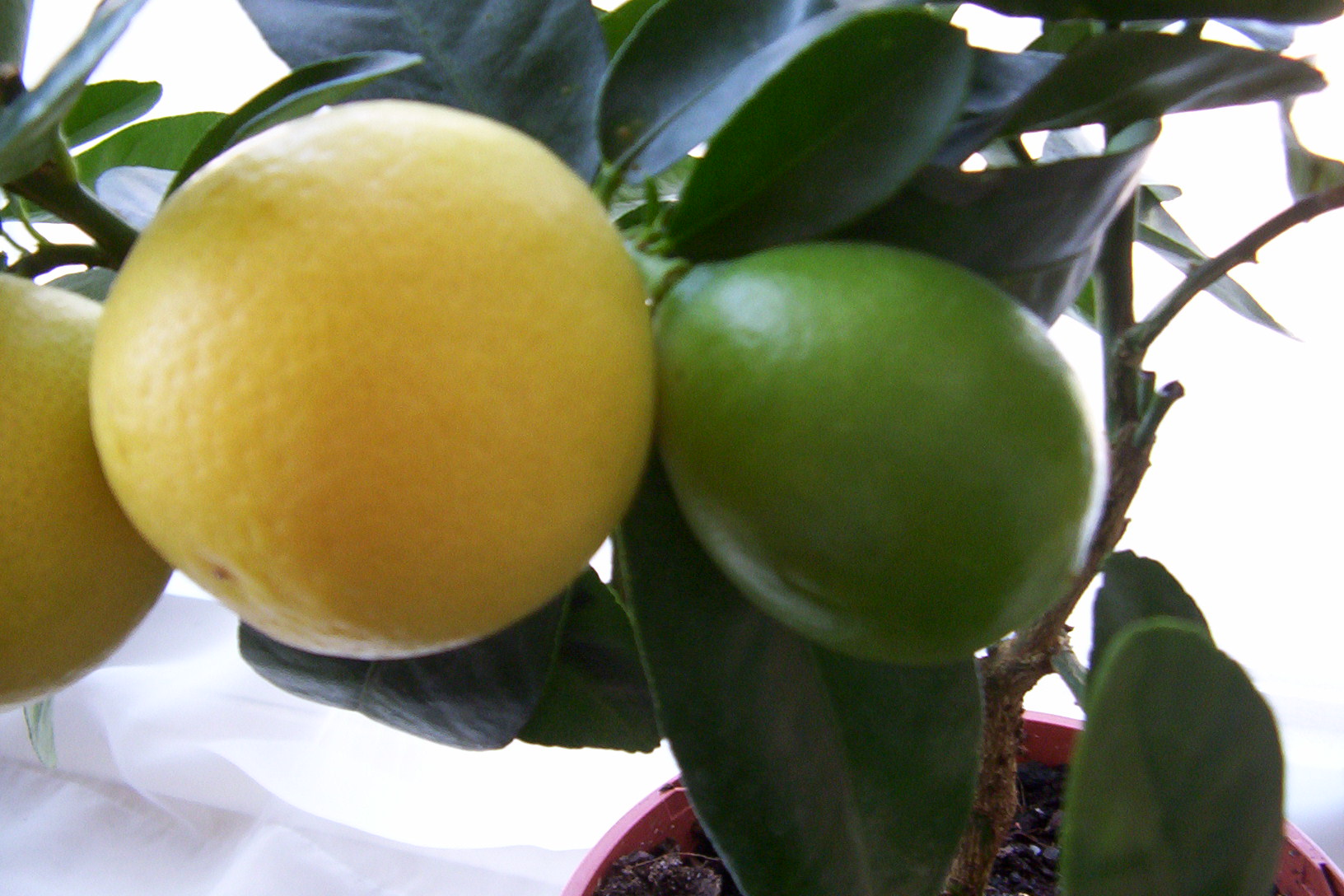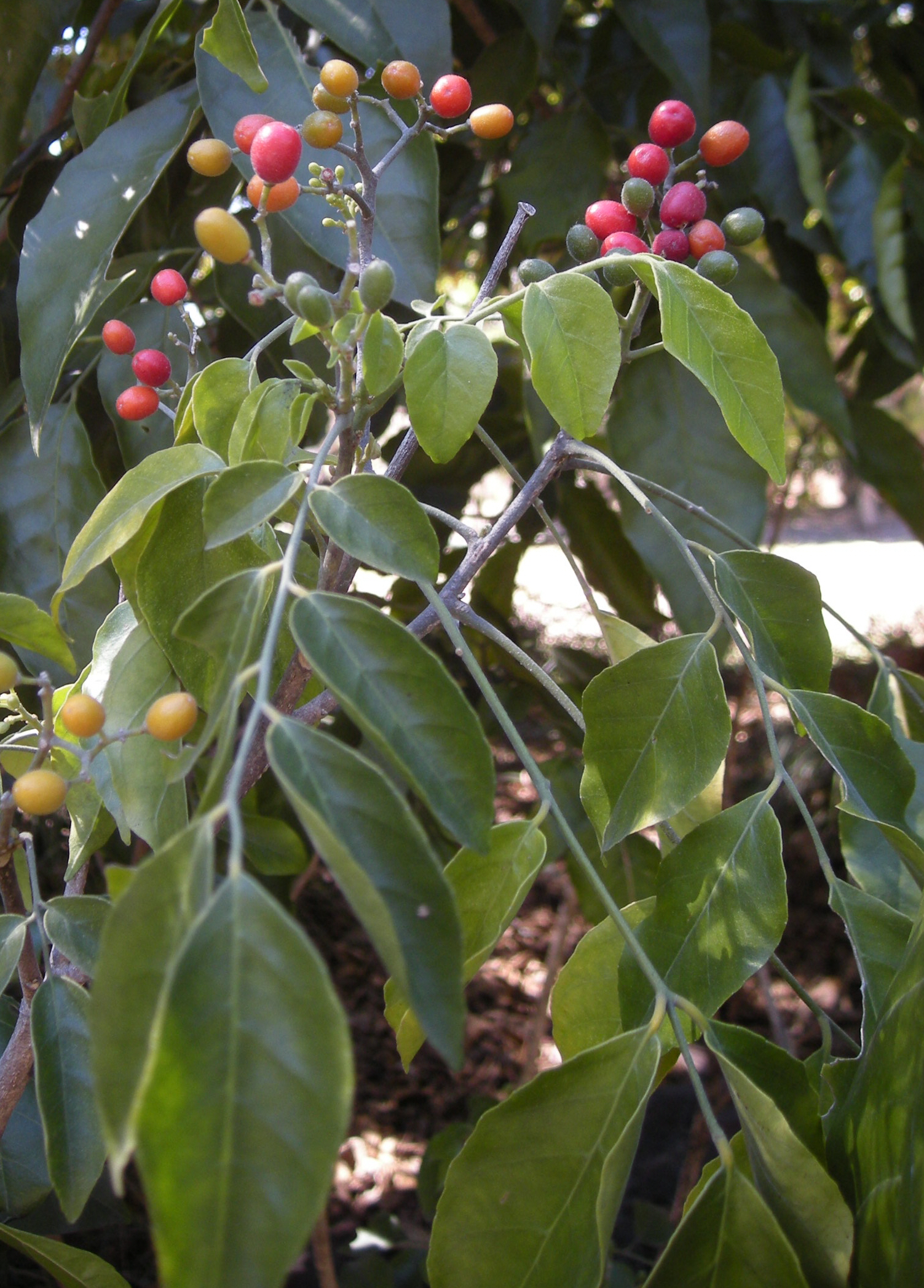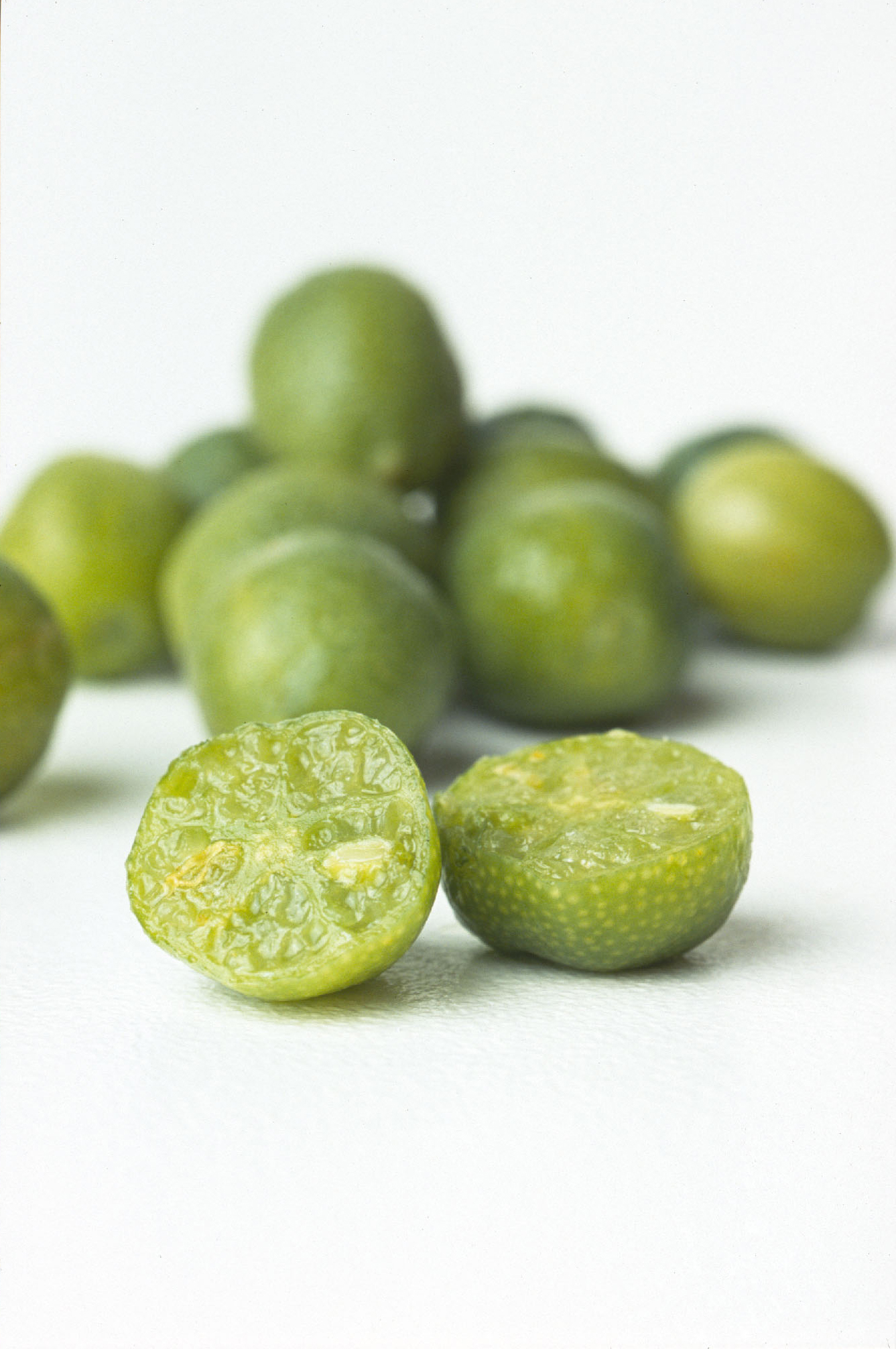|
Clymenia (plant)
''Clymenia'' is a small genus of flowering plants in the family Rutaceae with two species. The genus is often included in ''Citrus''. Description ''Clymenia'' forms a shrub or small tree, free of spines. Leaves feature a short, narrow petiole, which sets them apart from most other citrus, especially the papedas native to the same general area. ''Clymenia'' fruits are a small hesperidium, very similar to a citrus fruit. Sweet and lemony in flavor, the tangerine-sized fruits are highly segmented, with yellow pulp, and a leathery rind, similar to a true citrus fruit. They contain a large number of polyembryonic seeds. The fruit are eaten by the Bismarck islanders, who call it ''a-mulis'' ( Namatanai). Native to a handful of locations on Papua New Guinea and nearby islets, including New Ireland, New Britain and the Admiralty Islands, ''Clymenia'' is far more tropical than other citrus, and even in subtropical parts of the United States, it can only be grown in a greenhouse. S ... [...More Info...] [...Related Items...] OR: [Wikipedia] [Google] [Baidu] |
Walter Tennyson Swingle
Walter Tennyson Swingle (January 8, 1871 – January 19, 1952) was an American agricultural botanist who contributed greatly to the classification and taxonomy of citrus. Biography Swingle was born in Canaan, Pennsylvania, and moved with his family to Kansas two years later. He graduated from the Kansas State Agricultural College in 1890, and studied at the University of Bonn in 1895–96 and 1898. Swingle married Lucie Romstaedt in 1901; she died in 1910. He married Maude Kellerman, daughter of William Ashbrook Kellerman, in 1915 and they had four children. He died in Washington, D.C., on January 19, 1952. In 1927, botanist Elmer Drew Merrill published ''Swinglea'', which is a genus of flowering plants from the Philippines, belonging to the family Rutaceae and named in Walter Tennyson Swingle's honor. Contribution to US agricultural industry Swingle worked at the United States Department of Agriculture (1891), investigated subtropic fruits, established laboratories in Flor ... [...More Info...] [...Related Items...] OR: [Wikipedia] [Google] [Baidu] |
Pacific Islands
Collectively called the Pacific Islands, the islands in the Pacific Ocean are further categorized into three major island groups: Melanesia, Micronesia, and Polynesia. Depending on the context, the term ''Pacific Islands'' may refer to one of several different concepts: (1) those countries and islands with common Austronesian origins, (2) the islands once (or currently) colonized, or (3) the geographical region of Oceania. This list of islands in the Pacific Ocean is organized by archipelago or border, political boundary. In order to keep this list of moderate size, the more complete lists for countries with large numbers of small or uninhabited islands have been hyperlinked. Name ambiguity and groupings The umbrella term ''Pacific Islands'' has taken on several meanings. Sometimes it is used to refer only to the islands defined as lying within Oceania Oceania (, , ) is a region, geographical region that includes Australasia, Melanesia, Micronesia, and Polynesia. Spann ... [...More Info...] [...Related Items...] OR: [Wikipedia] [Google] [Baidu] |
Aurantioideae
Aurantioideae (sometimes known as Citroideae) is the subfamily within the rue and citrus family (Rutaceae) that contains the citrus. The subfamily's center of diversity is in the monsoon region of eastern Australasia, extending west through South Asia into Africa, and eastwards into Polynesia. Notable members include citrus (genus ''Citrus''), bael (''Aegle marmelos''), curd fruit (''Limonia acidissima''), species of genus ''Murraya'' such as curry tree (''M. koenigii'') and orange jessamine (''M. paniculata''), and the small genus ''Clausena''. Description Aurantioideae are smallish trees or large shrubs, or rarely lianas. Their flowers are typically white and fragrant. Their fruit are very characteristic hesperidia, usually of rounded shape and colored in green, yellowish or orange hues. Taxonomy The subfamily has been divided into two tribes, the ancestral Clauseneae and the more advanced Citreae, as in a 1967 classification. A 2021 classification by Appelhans et al. ba ... [...More Info...] [...Related Items...] OR: [Wikipedia] [Google] [Baidu] |
Clymenia Polyandra
''Clymenia'' may refer to: * ''Clymenia'' (ammonite), an ammonite genus in the family Clymeniidae * ''Clymenia'' (plant), a flowering plant genus in the family Rutaceae {{genus disambiguation ... [...More Info...] [...Related Items...] OR: [Wikipedia] [Google] [Baidu] |
Clymenia Platypoda
''Clymenia'' may refer to: * ''Clymenia'' (ammonite), an ammonite genus in the family Clymeniidae * ''Clymenia'' (plant), a flowering plant genus in the family Rutaceae {{genus disambiguation ... [...More Info...] [...Related Items...] OR: [Wikipedia] [Google] [Baidu] |
Subgenus
In biology, a subgenus (plural: subgenera) is a taxonomic rank directly below genus. In the International Code of Zoological Nomenclature, a subgeneric name can be used independently or included in a species name, in parentheses, placed between the generic name and the specific epithet: e.g. the tiger cowry of the Indo-Pacific, ''Cypraea'' (''Cypraea'') ''tigris'' Linnaeus, which belongs to the subgenus ''Cypraea'' of the genus ''Cypraea''. However, it is not mandatory, or even customary, when giving the name of a species, to include the subgeneric name. In the International Code of Nomenclature for algae, fungi, and plants (ICNafp), the subgenus is one of the possible subdivisions of a genus. There is no limit to the number of divisions that are permitted within a genus by adding the prefix "sub-" or in other ways as long as no confusion can result. Article 4 The secondary ranks of section and series are subordinate to subgenus. An example is ''Banksia'' subg. ''Isostylis'', ... [...More Info...] [...Related Items...] OR: [Wikipedia] [Google] [Baidu] |
Paraphyletic
In taxonomy (general), taxonomy, a group is paraphyletic if it consists of the group's most recent common ancestor, last common ancestor and most of its descendants, excluding a few Monophyly, monophyletic subgroups. The group is said to be paraphyletic ''with respect to'' the excluded subgroups. In contrast, a monophyletic group (a clade) includes a common ancestor and ''all'' of its descendants. The terms are commonly used in phylogenetics (a subfield of biology) and in the tree model of historical linguistics. Paraphyletic groups are identified by a combination of Synapomorphy and apomorphy, synapomorphies and symplesiomorphy, symplesiomorphies. If many subgroups are missing from the named group, it is said to be polyparaphyletic. The term was coined by Willi Hennig to apply to well-known taxa like Reptilia (reptiles) which, as commonly named and traditionally defined, is paraphyletic with respect to mammals and birds. Reptilia contains the last common ancestor of reptiles a ... [...More Info...] [...Related Items...] OR: [Wikipedia] [Google] [Baidu] |
Australian Lime
Australian limes are species of the plant genus ''Citrus'' that are native to Australia and Papua New Guinea. These species were formerly included in the genera ''Microcitrus'' and ''Eremocitrus''. They have been used as a food source by indigenous Australians as well as early settlers and are used in modern Australian cuisine, including marmalade and sauces. Species include: Species from Australia Natural species *''Citrus australasica'' (Finger lime), a species from rainforest regions of northern New South Wales and Southern Queensland with elongated yellow-green to purple fruits. *''Citrus australis'' (Round lime or Dooja), a species from south-eastern Australia with round, green fruits *'' Citrus glauca'' (Desert lime), from arid inland areas of inland Australia. Small round fruits are produced in summer. * ''Citrus garrawayi'', (Mount White lime) is rare and endemic to the Cook District of Cape York Peninsula. * '' Citrus gracilis'' (Kakadu lime or Humpty Doo lime) ... [...More Info...] [...Related Items...] OR: [Wikipedia] [Google] [Baidu] |
Homozygosity
Zygosity (the noun, zygote, is from the Greek "yoked," from "yoke") () is the degree to which both copies of a chromosome or gene have the same genetic sequence. In other words, it is the degree of similarity of the alleles in an organism. Most eukaryotes have two matching sets of chromosomes; that is, they are diploid. Diploid organisms have the same loci on each of their two sets of homologous chromosomes except that the sequences at these loci may differ between the two chromosomes in a matching pair and that a few chromosomes may be mismatched as part of a chromosomal sex-determination system. If both alleles of a diploid organism are the same, the organism is homozygous at that locus. If they are different, the organism is heterozygous at that locus. If one allele is missing, it is hemizygous, and, if both alleles are missing, it is nullizygous. The DNA sequence of a gene often varies from one individual to another. These gene variants are called alleles. While some gen ... [...More Info...] [...Related Items...] OR: [Wikipedia] [Google] [Baidu] |
Citrofortunella
Citrofortunella are a large group of commercial hybrids that cross the kumquat with other citrus. In the system of citrus taxonomy established by Swingle, kumquats were placed in a different genus, '' Fortunella'', from ''Citrus'', which included citron, mandarin orange, pomelo and papedas. The result of genetic crosses between kumquats and these other citrus would then be intergeneric hybrids, so a novel genus name was coined for them in 1975, by compounding the names of the contributing genera to form ''Citrofortunella''. That the genus is of a hybrid nature is represented by a multiplication sign before the genus name, for example × ''Citrofortunella microcarpa''. Recent phylogenetic work has shown kumquats to fall within ''Citrus'' rather than belonging to a distinct genus, meaning these would no longer be considered intergeneric hybrids, and use of ''Citrofortunella'' as a distinct genus name for these hybrids loses taxonomic validity. All would be placed instead within ... [...More Info...] [...Related Items...] OR: [Wikipedia] [Google] [Baidu] |
Atalanta
Atalanta (; grc-gre, Ἀταλάντη, Atalantē) meaning "equal in weight", is a heroine in Greek mythology. There are two versions of the huntress Atalanta: one from Arcadia, whose parents were Iasus and Clymene and who is primarily known from the tales of the Calydonian boar hunt and the Argonauts; and the other from Boeotia, who is the daughter of King Schoeneus and is primarily noted for her skill in the footrace. In both versions, Atalanta was a local figure allied to the goddess Artemis; in such oral traditions, minor characters were often assigned different names, resulting in minor regional variations. Mythology Early life At birth, Atalanta was taken to Mount Parthenion to be exposed because her father had desired a son. A she-bear—one of the symbols of Artemis—whose cubs had been recently killed by hunters came upon Atalanta and nursed her until those same hunters discovered her and raised her themselves in the mountains. Atalanta then grew up to be a swif ... [...More Info...] [...Related Items...] OR: [Wikipedia] [Google] [Baidu] |
Clymene (mythology)
In Greek mythology, the name Clymene or Klymene (; grc, Κλυμένη ''Kluménē'' means 'fame') may refer to: * Clymene, the wife of the Titan Iapetus, was one of the 3,000 Oceanids, the daughters of the Titans Oceanus and his sister-spouse Tethys. She was the mother of Atlas, Epimetheus, Prometheus, and Menoetius; other authors relate the same of her sister Asia. A less common genealogy makes Clymene the mother of Deucalion by Prometheus. She may also be the Clymene referred to as the mother of Mnemosyne by Zeus.Hyginus, ''Fabulae'Preface/ref> In some myths, Clymene was one of the nymphs in the train of Cyrene. * Clymene, another Oceanid, was given as the wife to King Merops of Aethiopia and was, by Helios, the mother of Phaethon and the Heliades. Others include: * Clymene, the name of one or two Nereid(s), 50 sea-nymph daughters of the 'Old Man of the Sea' Nereus and the Oceanid Doris. Clymene and her other sisters appeared to Thetis when she cries out in sympathy for t ... [...More Info...] [...Related Items...] OR: [Wikipedia] [Google] [Baidu] |







